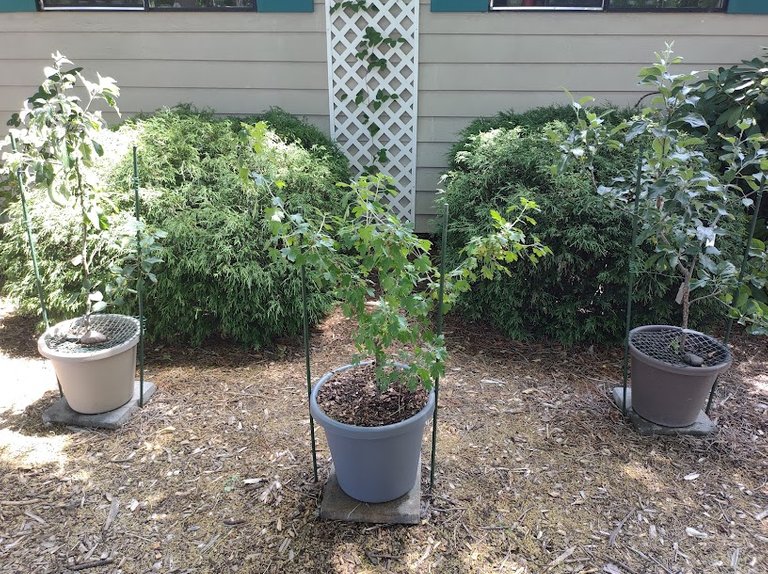
What is the most interesting plant you have recently planted in your garden? Tell me what you have been growing. Below I want to share my favorite plant I started growing in 2021.
Personally, I rate plants that are exciting and interesting based on three criteria.
Does it have idyllic leaves, branches, or bark?
Does it also have beautiful, long-lasting, sweet-smelling flowers that are plentiful and reach high enough for my nose to easily reach?
Does it have plentiful, long-lasting, sweet fruit that can be picked and enjoyed instantly?
Leaves and Branches
Paper thin light green veined leaves, with soft hairs along the edges. Branches are long like rose canes, and covered in needle sharp thorns.
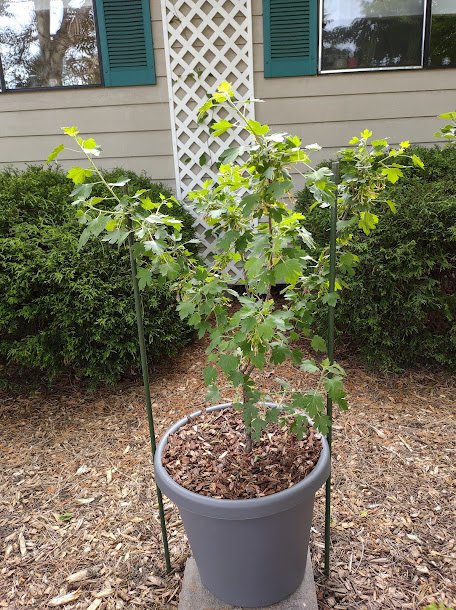
Flowers
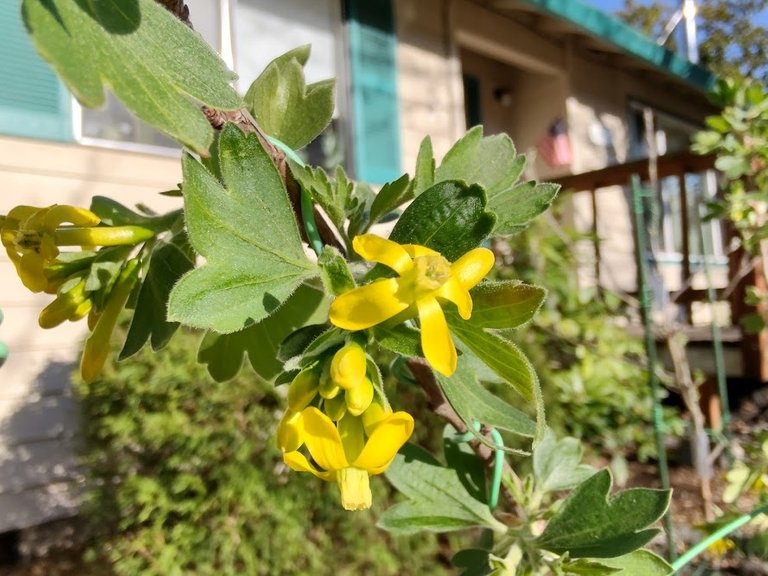
Plentiful, Sweet Nectar Scented, Long-Lasting, Bright Yellow with Pink Centers. Many people grow currants as an ornamental plant to be the centerpiece of the garden when it blooms.
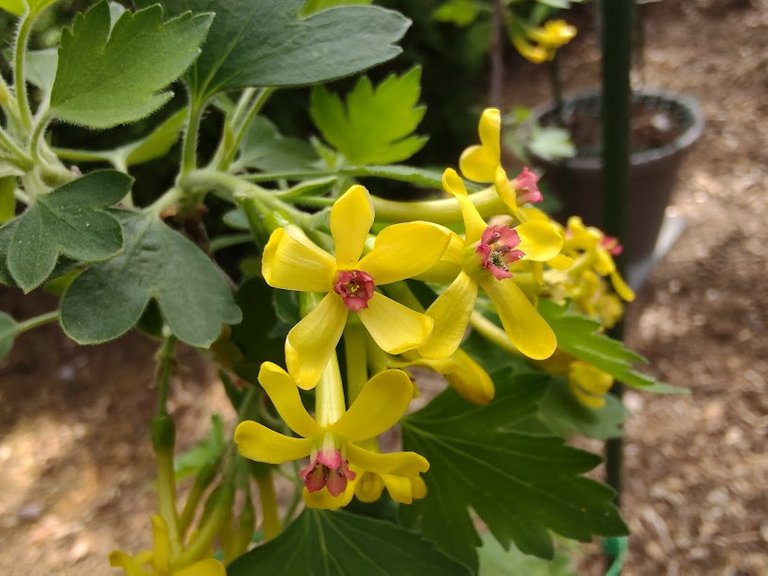
Fruit
Tart, sweet, deep, but simple enough to enjoy for instant gratification. Fruit can be picked off easily from July through August as it ripens.
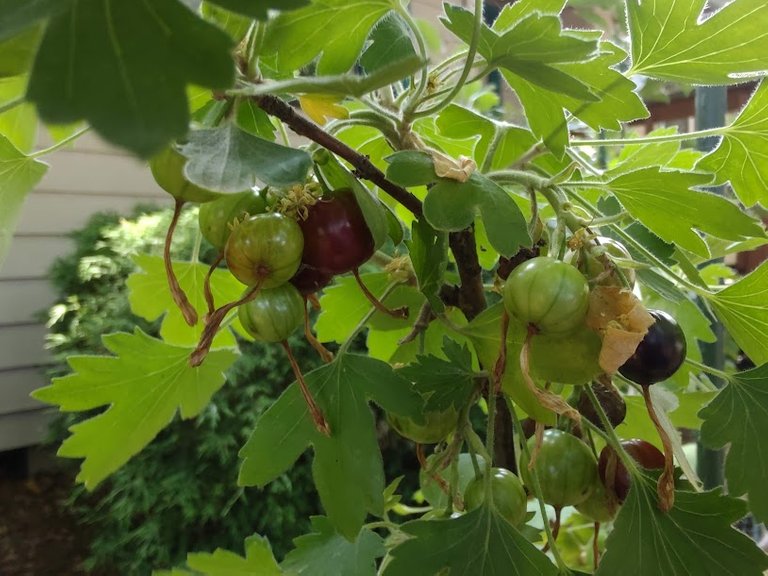
An easy cash crop, because it sells well if made into a jam. Especially in America, this berry is considered rare, even though it grows just as easily as it does in Merry Ol' England. It has to be processed into a jam or dried to extend it's shelf-life.
Beware: In some areas, this plant is considered invasive, and the source of a fungal disease that kills white pine. For forest preservation, this is why it is grown less in America.
I had stored some berries in a jar in the fridge, and noticed it started fermenting on it's own, so it can probably made into wine very easily.
Black Currant
Only one plant I have discovered ticks all these boxes. Best of all it can be fully enjoyed the first year after planting it, and it's practically maintenance free!
Last year I posted an article on Hive about a Black Currant I had recently planted. You can check that post here: https://ecency.com/hive-107082/@creativetruth/black-currant-new-garden-addition
Yes, Black Currant is my prized plant of the year. Often called Blackcurrant, without the space, when used as an ingredient in recipes.
What can I say? I am a sucker for anything that has plentiful sweet fruit on it. My dream garden from the start has been to grow a variety of things chock full of yummy edibles I can pluck off of the vines and into my mouth, all year round.
I came extremely close to getting a Flowering Red Currant instead of this Crandall variety. Sure pink flowers are pretty, but having sweet flowers plus hundreds of berries you never tire of eating is on a whole 'nother level.
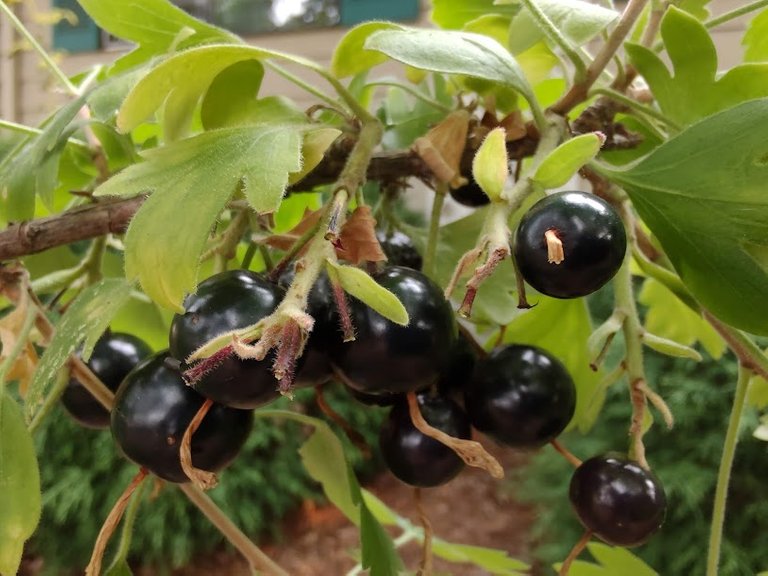
The black currant had been producing green, red, and deep purple berries by early July. Initially I felt they had a bit too much tart pectin for my taste, but as the weeks went by, the berries kept ripening. The flavor became richer, sweeter, and more complex. The berries get to about the size of a marble.
By August, the berries were almost black, and tasted the best. I was scooping up a handful every every morning to snack on. To me, they taste a bit between concord grapes and blueberries.
Some people might not like the pithy seeds or the skin, preferring only the jelly insides. I prefer to chew things, so long as there are no parts that have to be spit out. The skin and seeds do balance the sweetness slightly with a light bitterness, and are perfectly tender enough that it can be eaten normally. Seeds do not stick in the teeth as strawberries or blackberries often do.
Natural Medicine
Since I am sharing this post in the #NaturalMedicine community, I better spit something out... I mean about the good health of this plant, of course.
According to sources 1, 2, I learned the berries and seeds are loaded with vitamins (C, A, B-5, B-6, B-1, and E), antioxidants, and something amazing called anthocyanins.
The anthocyanins interact with most living cells to improve overall cell function. What does that mean? Everything!
Exercise longer. Recover faster. Reduce stress. Breath easier. Better metabolism. Better health for the old ticker. Better skin. Better vision. Concentrate easier. Reduce aging and feel younger!
True, the berries are loaded with lots of natural sugar too, so there are many alternative ways to gain the health benefits of black currants without overdosing on sugar. The seed oil from blackcurrant is the most common extract made from this plant. Designed for easily absorbing a high amount of the available nutrients. Though milder, teas and infusions can are made from the plant leaves.
Fool Proof
The plant is very resistant to disease. It's extremely fast growing and vigorous. I never saw signs of insect infestations, likely because it is super thorny (possibly the only downside to this plant).
I never saw signs of this plant struggling during the hottest days, when other plants were often wilting. Keep it deeply watered once every week or two. Consider staking it up, so it doesn't tip over from strong wind or animals.
Almost all research on this plant has warned me to watch out for birds that might pluck up all the berries before they finish ripening. Hogwash! At least not where I live. Nothing wants to touch these prickly stems. If you have deer or goats, sure protect the plant with wire fencing, or cover the berries in nylons or paper sacks to prevent birds from pecking at them. It's that easy.
Seasonal Interest
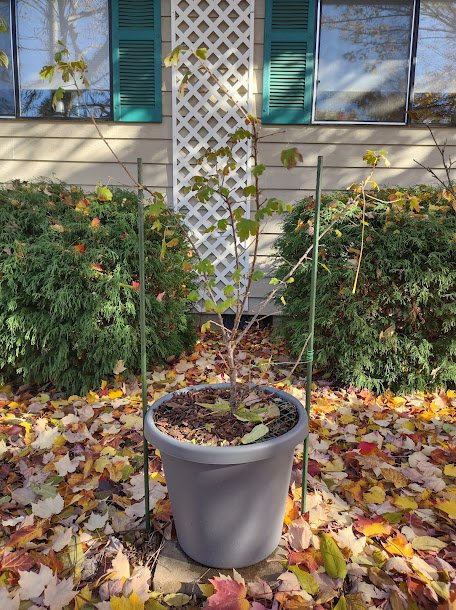
The Black Currant plant is a four season plant. It changes its appearance in all four seasons. Winter shows the thorns and branches. Spring shows the new leaves and honey nectar scented yellow flowers. In Summer it's branches are laden with green, purple, then black berries. And in Autumn its leaves begin to turn yellow before they fall.
Pruning
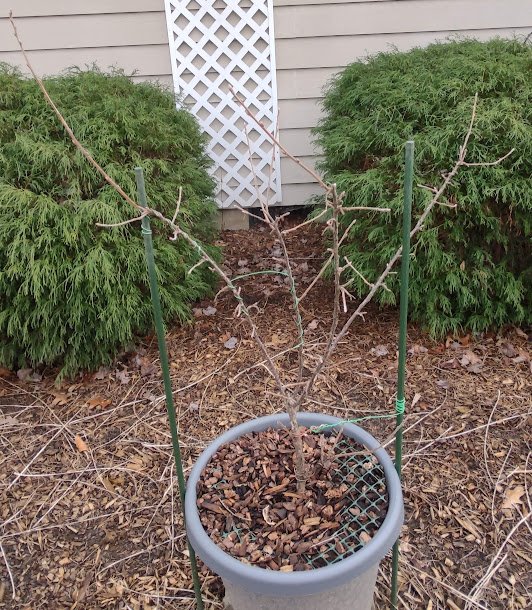
This month, in January 2022, I did a little bit of light pruning on the branch tips. It really does not need pruning, but I want to train it to stay dwarf sized and dense, to stay within the confined space allowed bit it's pot size.
Hopefully this will invigorate a many more secondary branches to pop-out and form fruit from more locations. It has an open center structure already, so I want it to extend more fruiting branches into a radial pattern away from the center. Ideally, in an open center shrub, all branches will receive direct access to full sunlight.
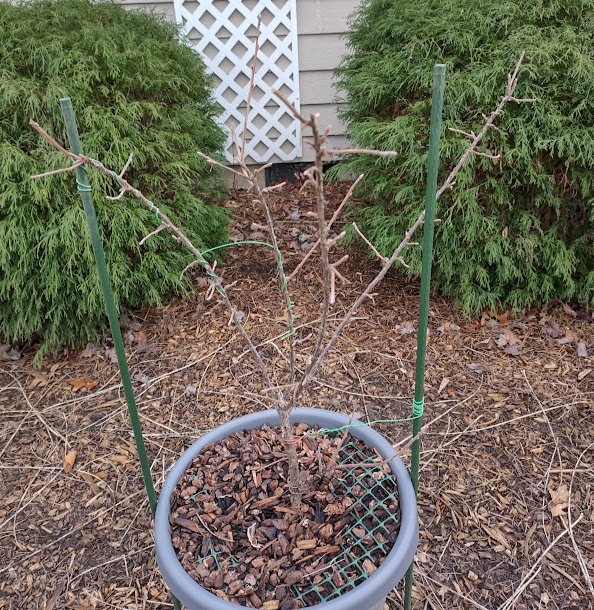
Here is what my tree looks like currently.
Looking forward to a big bumper crop this year in 2022!

The great part of the plants are the things you described, which is so rich in knowledge and I am impressed, the way you narrated those essential ingredients that can be obtained throughout the culture of the plants.
Those first 3 factors are the real identifiable points, and you describes just the exact.
Greetings,
I reallly love blackcurrant. I make an oxymel from it, or a 'shrub' which is a kinda vinegar cordial you have with fizzy. Basically ACV, blackcurrants, and honey which you infused a few weeks. I love eating them straight off the tree - they are quite an abundant plant!
That's interesting. I imagine topping the yogurt with black currant. who is the best, blackcurrant or blueberry? :)
Of course we should plant trees, fruits, wood are available from the trees and flowers make the mind happy. Also good for the environment. The plant also has medicinal properties that people have been using since ancient times
I tried with a Hokkaido-plant in a big pot on my balcony last summer. Got one small pumpkin!
I took a red currant berry from my horticulture job last year. I guess I should start planting it now (indoors) so it could get a headstart. I've never grown these. Do you have any tips? I think our variety might be thornless. I don't remember ever prickling myself or being warned.
Dry the fruit, then plant it directly into the soil. I tried this with goji berry, and it always works for starting indoors. If it molds slightly in a few weeks, that is good, as the young root will have something to feed it. Do not replant until you have a sturdy, woody stem after winter dormancy.
Thank you. I will heed your counsel.
Thank you for sharing this amazing post on HIVE!
Your content got selected by our fellow curator @priyanarc & you just received a little thank you via an upvote from our non-profit curation initiative!
You will be featured in one of our recurring curation compilations and on our pinterest boards! Both are aiming to offer you a stage to widen your audience within and outside of the DIY scene of hive.
Join the official DIYHub community on HIVE and show us more of your amazing work and feel free to connect with us and other DIYers via our discord server: https://discord.gg/mY5uCfQ !
If you want to support our goal to motivate other DIY/art/music/homesteading/... creators just delegate to us and earn 100% of your curation rewards!
Stay creative & hive on!